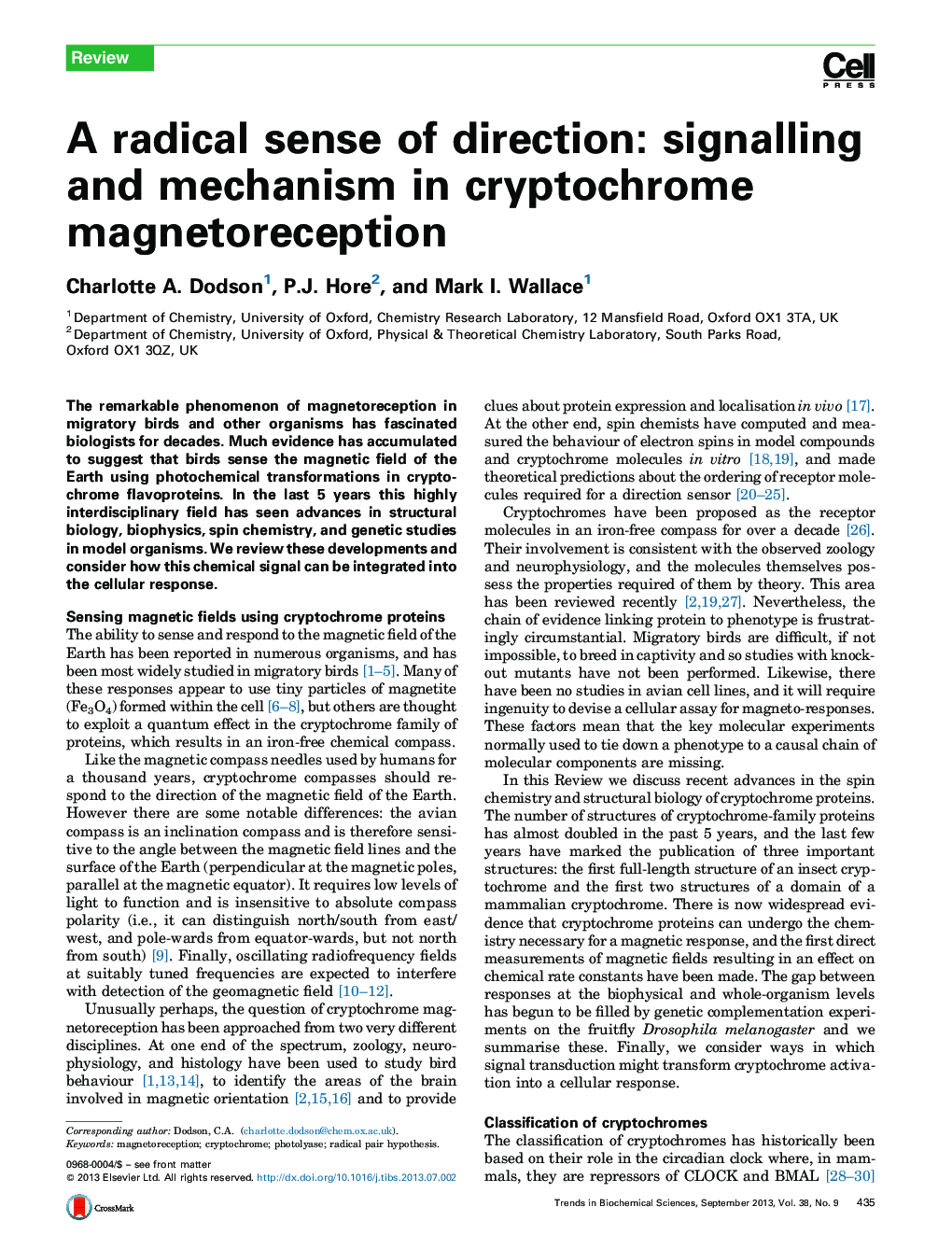| Article ID | Journal | Published Year | Pages | File Type |
|---|---|---|---|---|
| 2031626 | Trends in Biochemical Sciences | 2013 | 12 Pages |
•Magnetoreception in many organisms is thought to involve cryptochrome proteins.•A mechanism for this sensitivity is provided by the radical pair hypothesis.•Multiple cryptochrome structures enable us to rationalise differences in chemistry.•Recent results indicate that Drosophila may provide a good model for genetic studies.•Integrating magnetosensitivity into cellular pathways is a key future challenge.
The remarkable phenomenon of magnetoreception in migratory birds and other organisms has fascinated biologists for decades. Much evidence has accumulated to suggest that birds sense the magnetic field of the Earth using photochemical transformations in cryptochrome flavoproteins. In the last 5 years this highly interdisciplinary field has seen advances in structural biology, biophysics, spin chemistry, and genetic studies in model organisms. We review these developments and consider how this chemical signal can be integrated into the cellular response.
